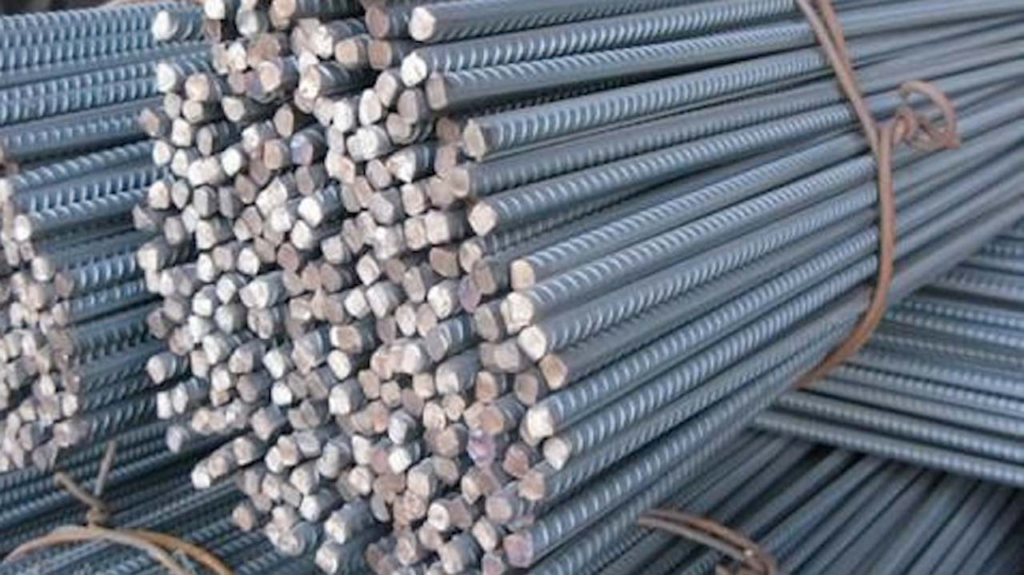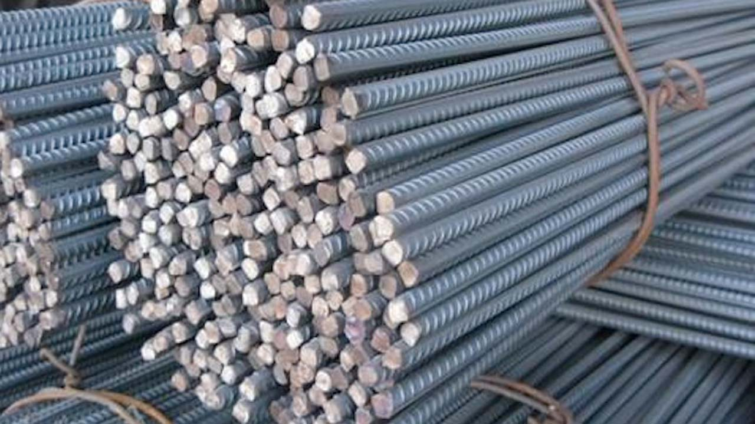Steel reinforcement bars play a crucial role in the construction industry as they are a major component of reinforced concrete - a composite material that has the strength to bear heavy loads. Mild steel reinforcement bars are the most used type of steel bars, owing to their availability in the domestic market, as opposed to high-yield bars, which are usually imported. The tensile strength provided by steel bars is essential for reinforced concrete structures to withstand external pressures and resist deformations.
The construction industry places a high emphasis on standardization, and standard nominal sizes of mild steel bars are instrumental in maintaining consistency and safety in construction practices. The use of substandard sizes can compromise the structural integrity of a building and, therefore, jeopardize the safety of its occupants.
It is essential to evaluate the prevalence of substandard mild steel reinforcement bars sizes in the Ghanaian market and how it affects the safety of buildings. The use of standard sizes of steel reinforcement bars is crucial in ensuring the safe and efficient design, specification, and construction of reinforced concrete structures. Structural engineers calculate the required area of steel and select the appropriate bar sizes based on design tables, which are created using these standard sizes. Standard sizes also promote consistency and facilitate comparisons and selection for different construction projects. Generally, using standard sizes of mild steel reinforcement bars is necessary to ensure that safety measures and consistency are maintained in the construction industry.
Mild steel reinforcement bars of varying nominal sizes are readily available for use in the construction industry. Nominal sizes range from 6mm, 8mm, 10mm, 12mm, 16mm, 20mm, 25mm, 28mm, 32mm, 40mm to 50mm, with the appropriate choice of size ensuring the reinforced concrete section’s strength to withstand anticipated loads and maintain durability over time. It is worth noting that different countries maintain specific standards for steel reinforcements. In the United States, ASTM A615 is the commonly used standard, while in the United Kingdom, BS 4449 is the standard followed, and in India, the IS 1786 standard is utilized. In Ghana, the Ghana Standards Authority has established the GS 788-2:2018 standard, which aligns somewhat with the British standard. However, it is essential to keep in mind that standard sizes may vary depending on local standards, building codes, and regulations.

A recent study conducted by Dr. Simon Ofori Ametepey, a professional engineer, and King Solomon Akorli from the Building Technology Department at Koforidua Technical University in Ghana revealed that the available mild steel reinforcement bar sizes in the local market did not meet the necessary standards. This study was part of a more extensive investigation that involved measuring the diameters of reinforcement bars from different manufacturers, wholesalers, and retailers in Accra. The researchers used a Vernier calliper to measure the diameters of 305 mild steel reinforcement bar samples and 166 high yield reinforcement bar samples. The measurements were validated using a Micrometre to ensure minimal error. The samples were further investigated, and the findings showed significant deviations from the standard sizes. The results raise concerns regarding the quality and safety of the bars used in construction in Ghana. Studies conducted by other professionals and researchers in Ghana have corroborated this assertion.
In contrast, high yield steel reinforcement bars imported to Ghana met the required standard sizes, possibly due to stricter quality control measures. The study showed that the available mild steel reinforcement bar sizes in the Ghanaian market differed significantly from the standard sizes recommended by structural engineers. Therefore, after completing the structural designs and specifying the required sizes of steel reinforcement bars, the reinforcement bars obtained from the market may not meet the recommended size, leading to non-conformance with design specifications. The research highlights the need for improved quality control measures in the manufacturing and selling of reinforcement bars to ensure that they meet the necessary standards for construction purposes. The table below presents the average measured sizes from the market and the difference compared to the standard sizes.
The standard and average measured sizes of mild steel reinforcement bars
| Reinforcement Bar Type | Standard Sizes (mm) | Average Measured Sizes from Market Survey (mm) | Difference in size (mm) | Percentage (%) Reduction in size |
| Mild Steel | 6 | 5.20 | 0.80 | 13.33 |
| 8 | 7.10 | 0.90 | 11.25 | |
| 10 | 8.40 | 0.60 | 6.00 | |
| 12 | 10.60 | 1.40 | 11.67 | |
| 16 | 14.60 | 1.40 | 8.75 | |
| 20 | 18.40 | 1.60 | 8.00 | |
| 25 | 22.80 | 2.20 | 8.80 |
The use of inferior mild steel reinforcement bars is a significant hazard to building safety. In many developing nations, structural deficiencies arise from the use of substandard materials in terms of sturdiness and size. Substandard reinforcement bars weaken the building’s overall structural integrity, placing it in more danger of collapsing during natural calamities, high winds, and earthquakes. Moreover, substandard rods can lead to the reduction of a building’s durability, resulting in a shorter lifespan.
Therefore, it’s of utmost importance to employ high-quality and approved reinforcement bars that meet size, specification, and standard requirements to ensure that the buildings or concrete structures are both strong and long-lasting. In construction projects, it’s critical to establish proper quality controls to ensure that only certified and dependable reinforcement bars are used.
The Ghana Standard Authority (GSA) is responsible for establishing standards and safeguarding the quality of construction materials, such as steel reinforcements. Though Ghana has established standards for steel reinforcement bars, there is still doubt surrounding the GSA’s ability to enforce these standards. Therefore, it is imperative to strengthen interactions, form partnerships with relevant bodies, and enforce strict measures and policies to guarantee conformity and protect consumers.
Ensuring the safety and durability of buildings is of utmost importance, and adherence to standard sizes of mild steel reinforcement bars is crucial for achieving this. Stakeholders in the steel manufacturing industry in Ghana must strictly adhere to the standards set by the Ghana Standards Authority (GS 788-2:2018) and international standards, such as BS 4449:2005, to ensure uniformity in steel reinforcement bar sizes. It is the responsibility of construction professionals to also ensure that all steel reinforcement bars purchased for construction projects meet the required standards and the Engineer’s specifications, maintaining the structural integrity of the building.
Government and the regulatory body must enforce the use of these standard sizes to enhance public safety and maintain acceptable levels of construction quality. To improve the quality of steel reinforcement bars in Ghana’s construction industry, it is imperative to strengthen existing regulations, promote awareness, and enforce quality control. Only by doing so can we ensure that the structural integrity of buildings and other structures is maintained and that the lives and safety of the individuals who use them are protected. Therefore, it is essential for all industry players to work collaboratively towards the common goal of improving the quality of steel reinforcement bars in Ghana’s construction industry.
*********
Dr. Simon Ofori Ametepey, the Principal Investigator of the study and writer is a Professional Engineer with the Institution of Engineering and Technology (IET) and a Senior Lecturer with the Department of Building Technology, Koforidua Technical University, Ghana. You can contact him via Email: simon.ametepey@ktu.edu.gh
Latest Stories
-
CLOGSAG vows to resist partisan appointments in Civil, Local Government Service
48 minutes -
Peasant Farmers Association welcomes Mahama’s move to rename Agric Ministry
49 minutes -
NDC grateful to chiefs, people of Bono Region -Asiedu Nketia
51 minutes -
Ban on smoking in public: FDA engages food service establishments on compliance
52 minutes -
Mahama’s administration to consider opening Ghana’s Mission in Budapest
54 minutes -
GEPA commits to building robust systems that empower MSMEs
57 minutes -
Twifo Atti-Morkwa poultry farmers in distress due to high cost of feed
59 minutes -
Central Region PURC assures residents of constant water, power supply during yuletide
60 minutes -
Election victory not licence to misbehave – Police to youth
1 hour -
GPL 2024/2025: Nations thrash struggling Legon Cities
1 hour -
Electoral offences have no expiry date, accountability is inevitable – Fifi Kwetey
1 hour -
Ghanaians to enjoy reliable electricity this Christmas – ECG promises
1 hour -
Police deny reports of election-related violence in Nsawam Adoagyiri
1 hour -
‘We’re not brothers; we’ll show you where power lies’ – Dafeamekpor to Afenyo-Markin
1 hour -
EPA says lead-based paints are dangerous to health, calls for safer alternatives
3 hours

